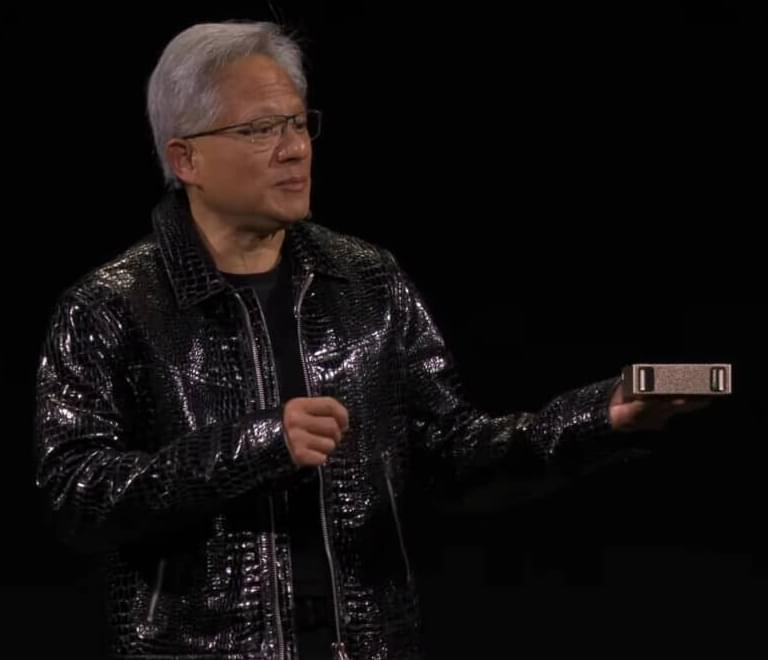Researchers develop QNodeOS, the first operating system for quantum networks, bridging hardware and software gaps.


01:13 How Does Tesla Bot Gen 3 Handle Real-World Tasks?
06:12 How much does the Tesla Bot Gen 3 truly cost?
10:36 How is Tesla planning to sell the Bot Gen 3?
===
New UPDATE! Elon Musk LEAKED Tesla Bot Gen 3 10K Mass Production & All Real-Life Tasks Testing! Recently, Elon Musk confidently announced that the Tesla Bot Optimus can navigate independently in 95% of complex environments and react in just 20 milliseconds!
With a plan to produce 10,000 Tesla Optimus Gen 3 units in 2025, Tesla is leveraging its AI infrastructure, manufacturing capabilities, and real-world testing across more than 1,000 practical tasks to prepare for mass production this year.
New UPDATE! Elon Musk LEAKED Tesla Bot Gen 3 10K Mass Production & All Real-Life Tasks Testing! In today’s episode, we have compiled evidence from official announcements, technical demonstrations to validate the feasibility of this plan and pinpoint the final timeline and pricing for the 2025 production model.
But before we dive into price analysis in Part 2 and exactly launching time in Part 3 of this episode, you should first understand what we expect from this Tesla humanoid robot—and more importantly, whether it’s truly worth the price.
How Does Tesla Bot Gen 3 Handle Real-World Tasks?
New UPDATE! Elon Musk LEAKED Tesla Bot Gen 3 10K Mass Production & All Real-Life Tasks Testing! John Kennedy, nearly seventy, lay motionless on the floor, pain radiating from his hip and spine. His phone was just a few steps away—close, yet out of reach. Then, everything went dark.
A humanoid robot detected his fall. It gently lifted him up, scanned his injuries, and instantly sent an alert to his doctor.
Then came the doctor’s words, they wanted to send him to an assisted living facility.
===
#888999evs #teslacarworld #teslacar #888999 #teslabot #teslaoptimus #teslabotgen2 #teslabotgen3
subcribe: https://bit.ly/3i7gILj
In this episode, Peter answers the hardest questions about AI, Longevity, and our future at an event in El Salvador (Padres y Hijos).
Recorded on February 2025
Views are my own thoughts; not Financial, Medical, or Legal Advice.
Chapters.
00:00 — Navigating Confusion in Leadership and Purpose.
02:00 — The Evolution of Work and Purpose.
03:50 — AI’s Role in Information Credibility.
07:17 — Sustainability and Technology’s Impact on Nature.
09:26 — Building a Future with AI and Longevity.
11:40 — The Economics of Longevity and Accessibility.
15:15 — Reimagining Education for the Future.
19:23 — Overcoming Human Obstacles to Progress.
I send weekly emails with the latest insights and trends on today’s and tomorrow’s exponential technologies. Stay ahead of the curve, and sign up now: https://www.diamandis.com/subscribe.
Connect with Peter:
Join us on Patreon! https://www.patreon.com/MichaelLustgartenPhD
Discount Links/Affiliates:
Blood testing (where I get the majority of my labs): https://www.ultalabtests.com/partners/michaellustgarten.
At-Home Metabolomics: https://www.iollo.com?ref=michael-lustgarten.
Use Code: CONQUERAGING At Checkout.
Clearly Filtered Water Filter: https://get.aspr.app/SHoPY
Epigenetic, Telomere Testing: https://trudiagnostic.com/?irclickid=U-s3Ii2r7xyIU-LSYLyQdQ6…M0&irgwc=1
Use Code: CONQUERAGING
NAD+ Quantification: https://www.jinfiniti.com/intracellular-nad-test/
Researchers at Drexel University have developed a breakthrough MXene air filter that could last much longer than traditional filters.

A novel industrial reactor that produces steel using only electricity hit a major milestone after producing a ton of steel at a prototype facility in Massachusetts, US. The technology was developed at MIT and is now set to help the steel industry reduce its emission footprint, a press release said.
Steel production is one of the major contributors to anthropogenic carbon emissions, responsible for up to nine percent of total carbon released into the atmosphere. For every ton of steel produced, 1.89 tons of CO2 are released into the atmosphere.

Imagine having the computational power of a full-fledged data center sitting on your desk for just $3,000. It might sound too good to be true, but Nvidia’s Project DIGITS is making it a reality. Designed in collaboration with MediaTek, this compact machine is pushing the boundaries of what’s possible with AI development and high-performance computing, offering impressive power in a surprisingly small form factor.

Mars, the next frontier in space exploration, still poses many questions for scientists. The planet was once more hospitable, characterized by a warm and wet climate with liquid oceans. But today Mars is cold and dry, with most water now located below the surface. Understanding how much water is stored offers critical information for energy exploration, as well as life sustainability on the planet.
A research group from Tohoku University has helped shed light on this by improving an existing Mars climate model. The enhanced model accommodates the various properties of Martian regolith, or the loose deposits of solid rock that comprise Martian soil. The study is published in the Journal of Geophysical Research: Planets.
Mirai Kobayashi says current models fail to account for the fact that laboratory experiments have demonstrated that the water-holding capacity of the regolith is strongly influenced by its adsorption coefficient.
Silicon Valley’s earliest stage companies are getting a major boost from artificial intelligence. Startup accelerator Y Combinator — known for backing Airbnb, Dropbox and Stripe — this week held its annual demo day in San Francisco, where founders pitched their startups to an auditorium of potential venture capital investors.
S not just the number one or two companies — the whole batch is growing 10% week on week, said Tan, who is also a Y Combinator alum. That App developers can now offload or automate more repetitive tasks, and they can generate new code using large language models. Tan called it vibe coding, a term for letting models take the wheel and generate software. In some cases, AI can code entire apps. The ability for AI to subsidize an otherwise heavy workload has allowed these companies to build with fewer people. For about a quarter of the current YC startups, 95% of their code was written by AI, Tan said.
T need a team of 50 or 100 engineers, said Tan, adding that companies are reaching as much as $10 million in revenue with teams of less than 10 people. You don [ https://open.substack.com/pub/remunerationlabs/p/y-combinato…Share=true](https://open.substack.com/pub/remunerationlabs/p/y-combinato…Share=true)
About 80% of the YC companies that presented this week were AI focused, with a handful of robotics and semiconductor startups.